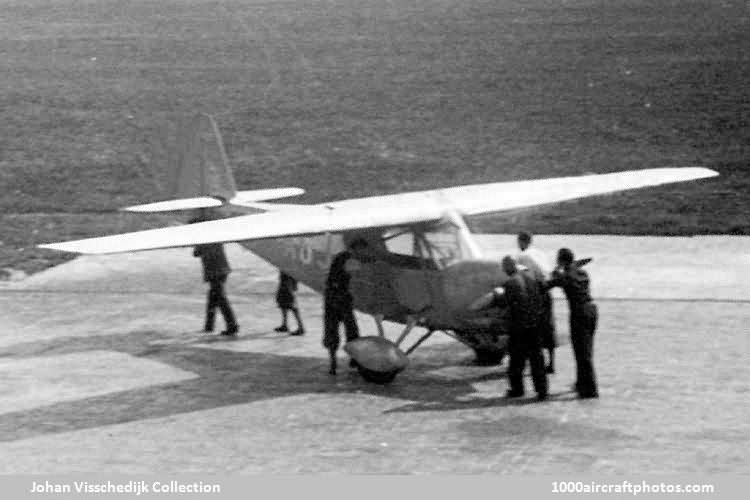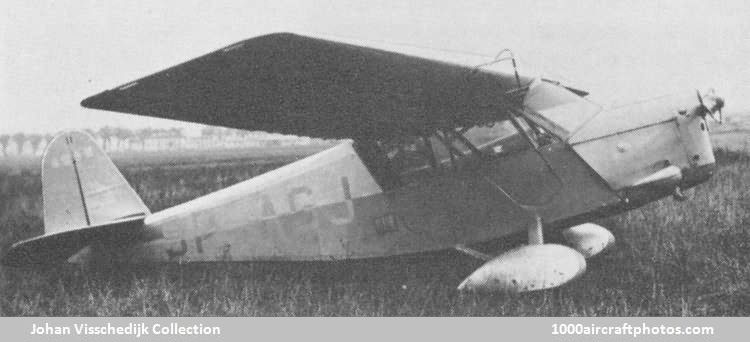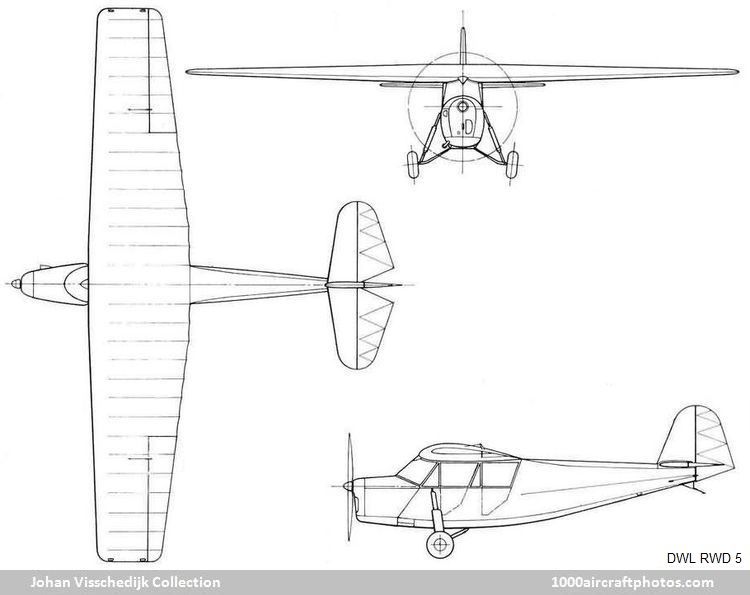



Atlantic flight
Consulting the RWD designers, Stanislaw Skarzynski selected for his record-breaking Atlantic flight a specially converted RWD 5, which became known as the RWD 5bis. To ensure greater comfort during long flights, the pilot's seat was provided with rubber cushions, which could be inflated in case of an emergency alighting on water, and arm rests and foot supports close to the rudder bar were fitted. By comparison with the standard model, overall span of the RWD 5bis was reduced to 33 ft 6 in (10.2 m), and empty and maximum loaded weights were 993 lb (446 kg) and 2,425 lb (1,100 kg).
Tankage was increased to a total of 198.7 gal (752 l) of fuel and 9.5 gal (36 l) of oil, which gave the machine a maximum range of up to 3,107 mls (5,000 km). A 79.25 gal (300 l) tank was fitted in the fuselage in place of the second cockpit (the door and windows of which were omitted), the balance of the fuel was carried in four tanks mounted side-by-side in the reinforced wing. The monoplane, conforming to the FAI Category 2 requirements (single-seaters weighing less than 992 lb, 450 kg), was powered by a 130 hp de Havilland Gipsy Major engine.
The aircraft was completed at the end of March 1933, and and a week later received the civil registration SP-AJU (c/n 67). Skarzynski intended to start his flight on 7 April, but the Aviation Technical Research Institute requested additional trials before clearing the aircraft for the attempt. These included a 10 hr endurance flight over Poland, which was made on April 15 and covered 1,025 mls (1,650 km). Clearance for the Atlantic flight was given five days later, and on April 27 the diminutive silver monoplane left Warsaw to begin its spectacular journey.
SP-AJU reached Saint Louis, Senegal on May 4, and, according to an official statement, was to make an attempt on the International Distance Record for Light Aircraft in Category 2 from St. Louis in the direction of Western Europe. Skarzynski's true intention of making the South Atlantic crossing with Brazil as his destination was a well-guarded secret, revealed only when the machine was already on its way to the American continent.
The RWD 5 bis took off for the South Atlantic flight from St. Louis on May 7, 1933, at 23.00 hr, and, after remaining airborne for 20 hr 30 min, the task was successfully completed when it landed the following day at 19.30 hr at Maceió, Brazil. By so doing the aircraft raised the International Distance Record in the FAI Category 2 to 3,582 km (2,224 miles). When, immediately after landing at Maceió, Skarzynski, bareheaded and wearing a grey suit, was approached by the chief of the aerodrome's radio station and in answer to his questions said: "I am Captain Skarzynski of the Polish Air Force. My last take off was from St. Louis-du-Sénégal", the bewildered fellow glanced at the tiny monoplane and then at the casual-looking little man in front of him and, convinced that it was a hoax, shrugged his shoulders and walked away.
The Maceió control had been warned about the attempted crossing (the RWD 5bis did not carry any radio equipment), but expected to see an impressive, large transatlantic machine, especially so as Skarzynski by-passed Natal, the nearest Brazilian airport on his route. In fact, on arrival at Maceió, he still had ample fuel reserves for several more hours flying, but decided not to extend the flight so as to avoid a risky landing in darkness on an unknown aerodrome. Only when the registration of the aeroplane had been checked against the aerodrome's records did Maceió burst into enthusiasm.
The history of flying is punctuated with great events which mark new peaks in the excellence of a machine and in the endurance of its crew, and Skarzynski's brilliant flight was just such an event in the light aircraft field, an achievement which remains unique to this day; with its empty weight of less than 992 lb (450 kg), the RWD 5bis was the lightest machine ever to cross the Atlantic, and, because of the later abolition of the Category 2 class by the FAI, its distance record was never officially beaten.
After a triumphal tour of Brazil, including several demonstration flights, Skarzynski and his famous SP-AJU left Rio de Janeiro on board the liner Avila Star on July 11, arriving at Boulogne on 27 July. Assembled at Boulogne, the aircraft was flown to Lódi, and then, on August 2, to Warsaw, covering during the entire tour 11,375 mls (18,305 km) in 104 hr 40 min flying time, giving an average speed of 108.7 mph (174.9 kmh). On return home Skarzynski received a hero's welcome and was decorated with the Order of Polonia Restituta. SP-AJU, known as Amerykanka (American), was presented to him by the Aero Club of the Polish Republic, and was subsequently converted to a standard two-seat configuration."